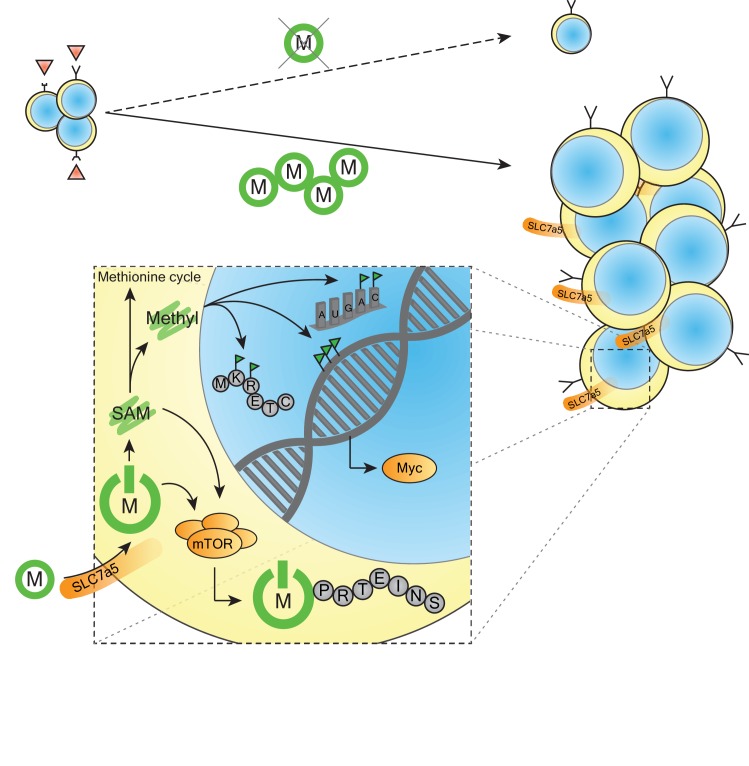Figure 1. Methionine and T cells.
When T cells recognize an antigen (red triangles; top left) they become activated and expand in both number and size. This expansion is dependent on the essential amino acid methionine (green circled M). In the absence of extracellular methionine, the T cells fail to expand (dashed line and arrow). When extracellular methionine is present, it is imported into the activated T cell by the system-L amino acid transporter Slc7a5. Inset: once inside the cell, the methionine (green start symbol M) is able to start the synthesis of new proteins through activation of the protein kinase mTOR. In addition, enzymatic conversion of methionine to s-adenosylmethionine (SAM) can also activate mTOR, and is used to donate methyl groups for the methylation of RNA residues (A: adenosine; C: cytosine), histones, DNA, and specific amino acids in proteins (K: lysine; R: arginine). The enhanced methionine import and generation of methyl groups can enhance the expression of the transcription factor Myc. Green color indicates methionine or methionine-derived metabolites; orange depicts activation or upregulation.

